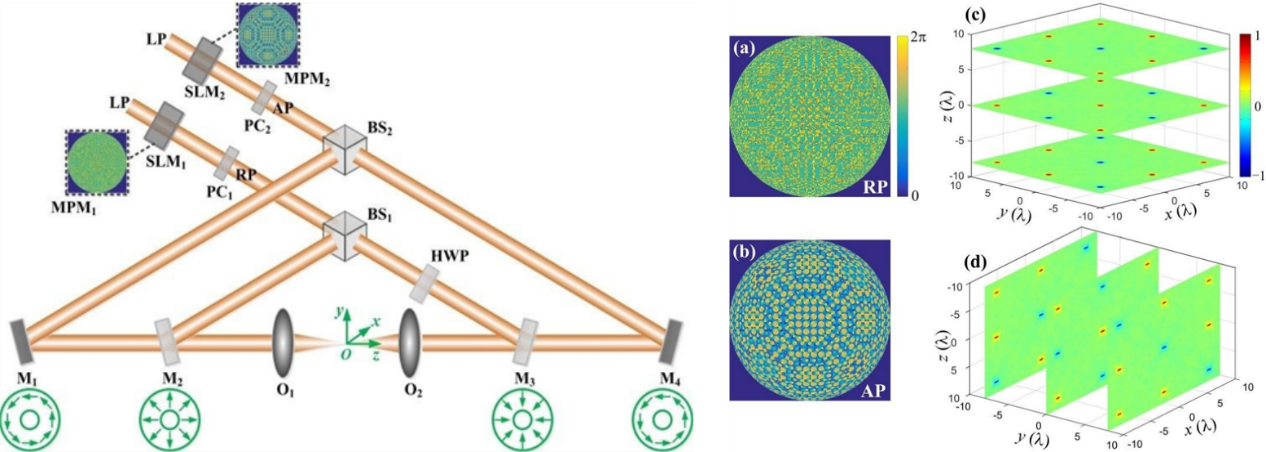 Schematic of the 4π microscopic system and generated 3×3×3 multiple chiral spots in 3D. (image by XIOPM)
Schematic of the 4π microscopic system and generated 3×3×3 multiple chiral spots in 3D. (image by XIOPM)
Chirality is one of the essential attributes of nature. Chiral molecules paired in left- and right-handed forms are known as enantiomers. Although the enantiomers share almost all properties except the handedness, they perform entirely different biological functions. Now, molecular chirality distinguishing plays an important role in biological, chemical, and pharmaceutical study, as well as in the industry.
Interestingly, a handedness-dependent response can occur only when a chiral light beam illuminates a corresponding chiral matter. This light-matter interaction phenomenon has drawn much attention from scientists and already spawned various new materials. Undoubtedly, how to create chiral light fields is one of the keys to the research.
A research team led by Prof. YAO Baoli at State Key Laboratory of Transient Optics and Photonics, Xi’an Institute of Optics and Precision Mechanics (XIOPM) of Chinese Academy of Sciences (CAS), developed a new technology to create chiral light fields flexibly, so that addressed the “how-to” question.
Unlike previous approaches, the new technology performed on a 4π microscopic system and utilized radially or azimuthally polarized beams to generate the chiral light fields. Thanks to the technology, the properties such as location, number, and handedness of the focused chiral spots can be simultaneously and independently controlled. The technology allows researchers to arbitrarily adjust any of the properties, depending on the application requirements while without trade-offs. This work was accepted in the journal Nanoscale recently.
The research team demonstrated a quasi-spherical 3D super-resolution (~λ3/52) chiral spot when considering the longitudinal component of the focused field only. Arbitrary chiral optical field with multiple spots carrying one or both two handedness of optical chirality, for example, 1D along one axis, 2D in some plane or 3D in spatial, can be generated by the multiple phase masks (MPMs) which designed analytically. This controllable chiral optical field shows excellent potential to be applied in diverse researches, such as particle trapping, chiral detection, and enantioselective separation at the nanometer scale.
Download: